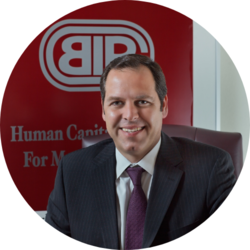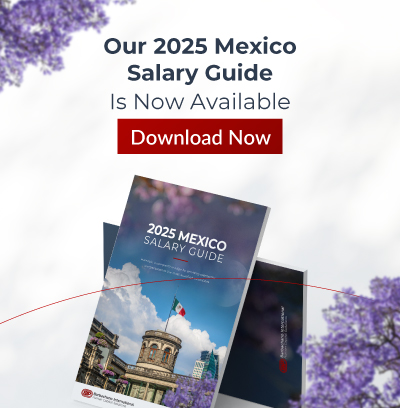
If you think hiring talent in 2025 will be business as usual, think again. The recruitment industry has changed, and keeping up will mean rethinking how to attract and secure top professionals and leadership. Gone are the days when job seekers lined up for roles without asking too many questions. Today, candidates are highly selective and want more than a paycheck—they want purpose, growth, and flexibility.
Your strategy now shouldn’t focus only on finding the right person for the job; it should be to connect with people in meaningful ways and create opportunities that resonate with them. If you want to stay ahead in 2025, here’s what you need to know.
Candidates Are Setting the Pace
Let’s start with the obvious: Candidates have the upper hand. They’re steering the conversations, negotiating the perks, and focusing on what matters most to them. An SHRM study reports that 76% of professionals prioritize growth and development opportunities over higher pay. Climbing the corporate ladder isn’t merely a matter of reaching the top anymore—it’s a matter of making sure every rung adds value.
What you can do: Don’t offer a job; offer a future. Double down on opportunities for personal development, leadership programs, and career progression. Companies like Adobe have embraced this strategy, with initiatives that increase engagement by offering a clear path to growth.
Remote Work Is Here to Stay
The pandemic may have jump-started the remote work movement, but it has moved beyond being a trend and is now an expectation. A recent Future Forum survey found that 80% of employees now expect flexibility regarding where, when, and how they work. For you, this means adapting hiring processes to fit a remote-first mindset.
What you can do: Use virtual hiring tools to connect with candidates in impactful ways. AI-driven platforms like HireVue can refine the interview process and help you recognize whether a candidate is a good cultural fit. Using these kinds of resources is a great way to modernize the hiring experience for both sides.
The Hidden Power of Passive Talent
Here’s the secret about the best candidates: They’re probably not actively job hunting. Passive candidates—already employed but open to the right opportunity—are an untapped goldmine, but reaching them takes finesse.
What you can do: Approach passive talent with personalized, purposeful outreach. Generic messages won’t work; be specific and have a conversation that resonates with their values and career goals. Vivian Chen, Founder and CEO of Rise, says talking about a candidate’s interests and connecting on a personal level can make a memorable impression (Lever).
The Reality of Extended Timelines
For senior roles, hiring is taking longer than ever. Notice periods can stretch up to six months, which means organizations need to plan well in advance to avoid gaping productivity holes.
What you can do: Build talent pipelines now. Think beyond immediate needs and prepare for future transitions. Companies like General Electric have mastered this strategy with vigorous succession planning, using readiness metrics to anticipate changes and maintain stability.
Automation Is a Game-Changer
The current economy’s economic pressures are forcing organizations to rethink how they distribute resources. Automation has become a powerful tool to simplify hiring processes, cutting down on time-intensive tasks and freeing up recruiters to concentrate on strategy.
What you can do: Let technology handle the heavy lifting. AI solutions can screen resumes, schedule interviews, and communicate with candidates to save you time and increase efficiency. By automating repetitive duties, you’ll have more bandwidth to build strong relationships with potential hires.
Managing the Flood of Applications
AI has also made it easier to apply for jobs, so recruiters are facing an overwhelming number of applications. Sorting through them quickly and efficiently has become a major challenge.
What you can do: Invest in an advanced applicant tracking system (ATS) that can filter applications based on specific criteria. These systems push the most qualified candidates to the top, so you can make faster and more informed decisions.
Finding Balance with AI
Artificial intelligence is transforming recruitment with data-backed insights that facilitate smart decision-making. But while AI can improve efficiency, it can’t replace human connection.
What you can do: Use AI as an aid, not a replacement. Data may help you identify strong candidates, but personal interaction will tell you much more about a person than a machine ever can. The most successful recruiters know when to rely on technology and when to step in with a human touch.
In 2025, recruitment will require aligning your hiring strategies with what the talent pool values. By focusing on purpose, flexibility, and authentic connections, you can create a hiring experience that attracts outstanding candidates and adapts to today’s expectations around work-life balance and professional growth.
Successful hiring hinges on building relationships that last. Your next great hire could redefine what’s possible for your team. The question is: How will you make that connection?

By Fernando Ortiz-Barbachano
President & CEO of Barbachano International
Barbachano International (BIP) is the premier executive search and leadership advisory firm in the Americas with a focus on diversity & multicultural target markets. Since 1992, BIP and its affiliates have impacted the profitability of over 50% of Fortune 500 Companies. BIP has been recognized by Forbes as Americas’ Best Executive Search Firms and currently ranks #10 and #3 on the West Coast.

